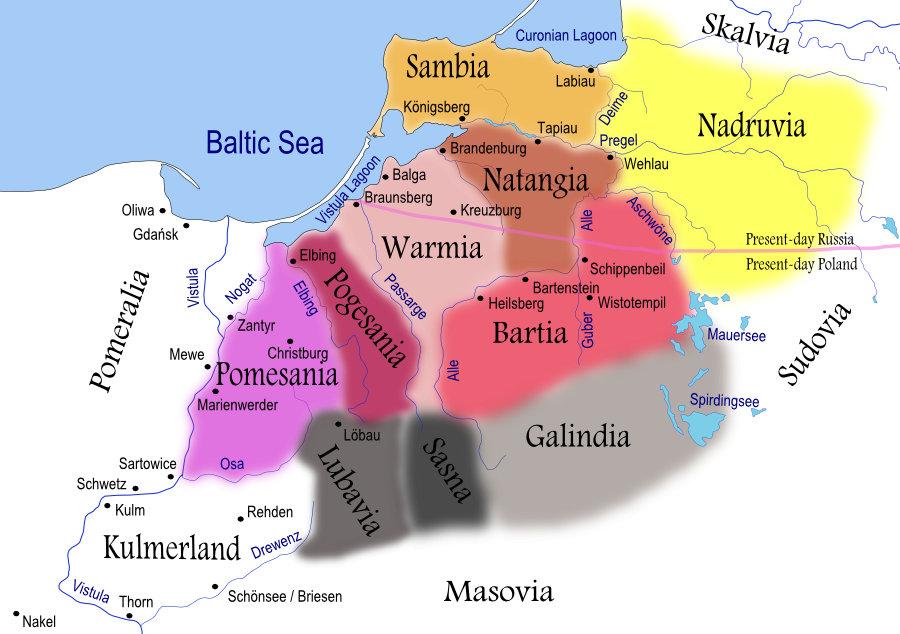|
Ĺšlepowron Coat Of Arms
Ślepowron is a Polish heraldry, Polish coat of arms. It was used by several szlachta families in the times of the Polish–Lithuanian Commonwealth. From the fifteenth century, the descendants of the Ślepowron family began to use names taken from their lands. This led to many different surnames being created within one family, symbolically united under the Korwin coat of arms, Korwin (raven) coat of arms, which is thus unique in Polish heraldry. Wawrzęta Korwin de Ślepowron is the oldest known ancestor of the family, although their oral traditions claim descent from Marcus Valerius Corvus, a Roman general. Blazon A black raven with a gold ring in its beak and its wings somewhat extended for flight, facing right, standing atop a cross, on the shoulders of a horseshoe standing erect with heels at the bottom. The shield is blue and the horseshoe silver. Above the shield, on a crowned helmet stands a similar raven. The horseshoe and cross were added to the coat of arms due to a ... [...More Info...] [...Related Items...] OR: [Wikipedia] [Google] [Baidu] |
Korwin Coat Of Arms
Korwin is a Polish heraldry, Polish coat of arms. It was used by several szlachta families in the times of the Polish–Lithuanian Commonwealth and by the Russian Counts Korwin-Jelita coat of arms, Litwicki tracing their origin back to Empress Catherine the Great. History For some reason, an old Polish chivalry Polish clans, clan from Sarmatians, Sarmatian breeding, chose raven as his symbol. Perhaps it was their totem symbol because those clans, then pagans, were more ancients than the christening of Poland and the rise of the Kingdom of Piast Dynasty. Many centuries later, we know about it from a grant of privilege to Wawrzęta (or ''Wawrzyniec'' - Lawrence) Korwin z Ślepowrony from Duke Konrad I of Masovia, at Warsaw in 1224, according to Jan Długosz, Bartosz Paprocki, Bartholomew Paprocki, Count Juliusz Ostrowski, etc. The authors understand the Korwin "proper" actual drawing came to Poland from Hungary, more or less two centuries later. The so-called Roman-Hung ... [...More Info...] [...Related Items...] OR: [Wikipedia] [Google] [Baidu] |
Konrad I Of Masovia
Konrad I of Masovia (ca. 1187/88 – 31 August 1247), from the Polish Piast dynasty, was the sixth Duke of Masovia and Kuyavia from 1194 until his death as well as High Duke of Poland from 1229 to 1232 and again from 1241 to 1243. Life Konrad was the youngest son of High Duke Casimir II the Just of Poland and Helen of Znojmo, daughter of the Přemyslid duke Conrad II of Znojmo (ruler of the Znojmo Appanage in southern Moravia, part of Duchy of Bohemia). His maternal grandmother was Maria of Serbia, apparently a daughter of the pre- Nemanjić ''župan'' Uroš I of Rascia. After his father's death in 1194, Konrad was brought up by his mother, who acted as regent of Masovia. In 1199, he received Masovia and in 1205 the adjacent lands of Kuyavia as well. In 1205, he and his brother, Duke Leszek I the White of Sandomierz, had their greatest military victory at Battle of Zawichost against Prince Roman the Great of Galicia–Volhynia. The Ruthenian army was crushed and R ... [...More Info...] [...Related Items...] OR: [Wikipedia] [Google] [Baidu] |
Hunyadi Family
The House of Hunyadi was one of the most powerful noble families in the Kingdom of Hungary during the 15th century. A member of the family, Matthias Corvinus, was King of Hungary from 1458 until 1490, King of Bohemia (ruling in Moravia, Lower Lusatia, Upper Lusatia, and Silesia) from 1469 until 1490, and Duke of Austria from 1487 until 1490. His illegitimate son, John Corvinus, ruled the Duchy of Troppau from 1485 until 1501, and five further Silesian duchies, including Bytom, GĹ‚ubczyce, Loslau, RacibĂłrz, and Tost, from 1485 until 1490. The Hunyadi coat-of-arms depicted a raven with a golden ring in its beak. The founder of the family, Voyk, received the eponymous Hunyad Castle (in present-day Hunedoara, Romania) from Sigismund, Holy Roman Emperor, Sigismund, King of Hungary, in 1409. His ethnicity is the subject of scholarly debate. Some modern historians describe him as a Vlach, or Romanians, Romanian, Knez (Vlach leader), knez or Boyars of Wallachia and Moldavia, b ... [...More Info...] [...Related Items...] OR: [Wikipedia] [Google] [Baidu] |
Wallachia
Wallachia or Walachia (; ; : , : ) is a historical and geographical region of modern-day Romania. It is situated north of the Lower Danube and south of the Southern Carpathians. Wallachia was traditionally divided into two sections, Muntenia (Greater Wallachia) and Oltenia (Lesser Wallachia). Dobruja could sometimes be considered a third section due to its proximity and brief rule over it. Wallachia as a whole is sometimes referred to as Muntenia through identification with the larger of the two traditional sections. Wallachia was founded as a principality in the early 14th century by Basarab I after a rebellion against Charles I of Hungary, although the first mention of the territory of Wallachia west of the river Olt dates to a charter given to the voivode Seneslau in 1246 by BĂ©la IV of Hungary. In 1417, Wallachia was forced to accept the suzerainty of the Ottoman Empire; this lasted until the 19th century. In 1859, Wallachia united with Moldavia to form the Un ... [...More Info...] [...Related Items...] OR: [Wikipedia] [Google] [Baidu] |


